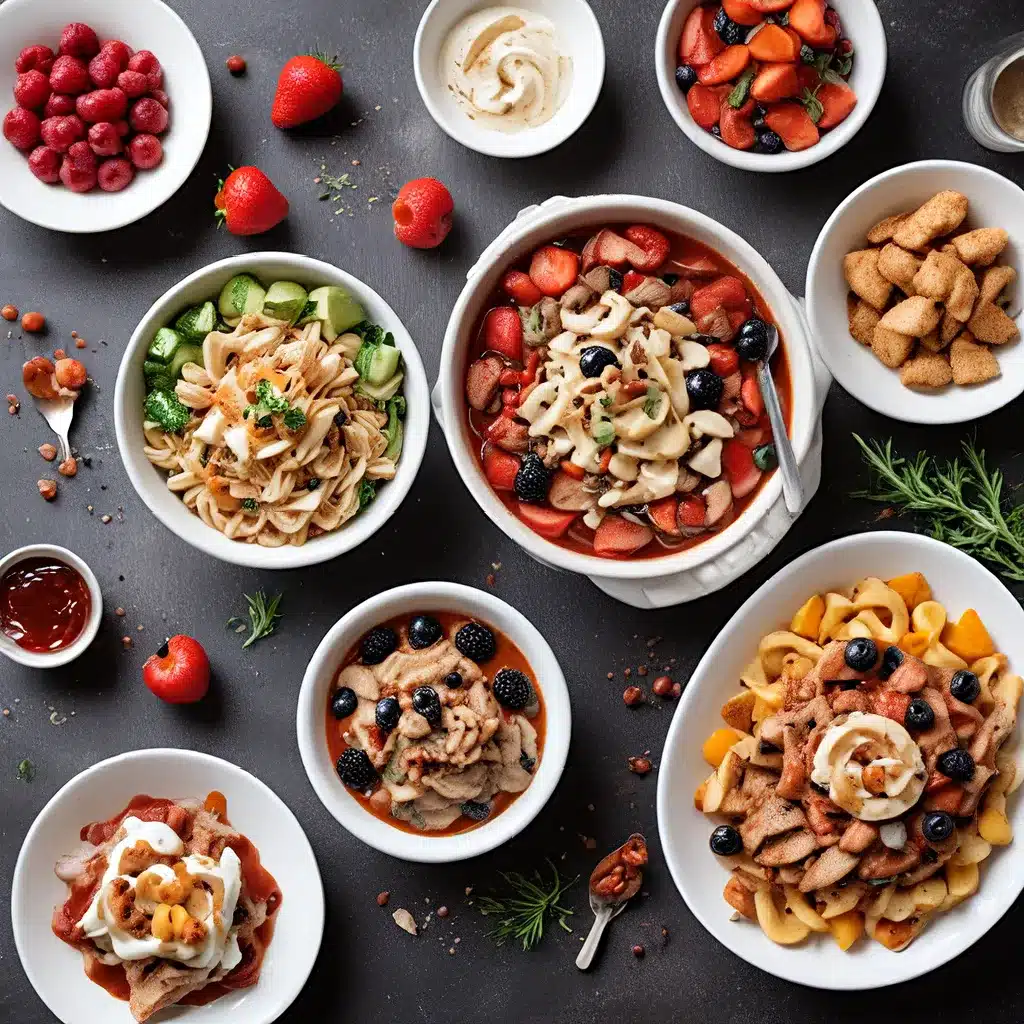
Stepping into the Delectable World of Food Photography
As a photographer, I’ve always been drawn to the captivating beauty that lies within the culinary realm. From the vibrant hues of a freshly prepared meal to the intricate textures of a delectable dessert, there’s a certain je ne sais quoi that makes food a truly mesmerizing subject. Recently, I had the opportunity to dive deeper into the art of food photography, and let me tell you, it’s been an absolute delight.
It all started when I decided to shake up my photography classes at the Ulsan Support Center for Foreigners. Instead of sticking to our usual varied curriculum, I felt an irresistible pull towards the world of food photography. After all, in a city like Ulsan, where culinary delights abound, mastering the art of capturing these mouthwatering moments is practically a necessity for any aspiring photographer.
Mastering the Basics: Positioning, Lighting, and Angles
We kicked off our food photography journey by exploring the fundamentals – positioning, lighting, and angles. It was fascinating to see my students’ eyes light up as they learned how to frame their subjects, identify the perfect shooting angles, and utilize various lighting techniques to make those dishes pop.
One of the key lessons we covered was the importance of identifying the right angles. As it turns out, the angle from which you capture your food can make all the difference in the world. A simple tilt of the camera can transform a mundane-looking plate into a visually captivating masterpiece. My students quickly learned that experimenting with different perspectives, be it from above, below, or even at eye level, is the secret to unlocking the true beauty of their culinary subjects.
Equally crucial was our deep dive into lighting. We explored the use of natural light, artificial lighting, and even reflectors to create the perfect illumination for our food photography. Watching my students experiment with various setups, carefully adjusting the position of their lights and reflectors, was incredibly rewarding. They quickly realized that the interplay of light and shadow can make or break a food photograph, and they embraced the challenge with enthusiasm.
Putting Theory into Practice: Staging and Styling
Once we had a firm grasp on the technical aspects, it was time to dive into the art of staging and styling. My students brought in an assortment of snacks and drinks, and we transformed the Ulsan Support Center for Foreigners into a veritable food photography studio. With tripods, reflectors, and an array of backgrounds at our disposal, we set out to create visually striking compositions.
The students’ creativity and experimentation were truly inspiring. They played with different props, experimenting with textures, colors, and patterns to create cohesive and visually appealing scenes. I was particularly impressed by their ability to balance the elements within the frame, ensuring that the food remained the undisputed star of the show.
A Delicious Adventure: Capturing the Essence of Donas Donuts
The highlight of our food photography unit, however, was the monthly photowalk that took us to Donas Donuts, a local café known for its mouthwatering creations. Emily, the owner, graciously welcomed us into her cozy establishment and allowed us to use it as our very own studio. Her donuts, which are some of the best in Ulsan, became our delectable subjects, and the challenge was to capture their essence without devouring them first – a struggle I can certainly relate to!
Watching my students in action, experimenting with different setups and angles, was incredibly rewarding. Their enthusiasm and creativity were palpable, and the results were nothing short of spectacular. They managed to infuse their photographs with a tangible sense of texture, depth, and temptation, making it nearly impossible for the viewer to resist the urge to take a bite.
The Transferable Skills of Food Photography
One of my students expressed a bit of frustration, questioning the time and effort invested in simply taking pictures of food. I took the opportunity to explain that the skills honed in food photography – handling different lighting situations, using reflectors, staging scenes, paying attention to detail, and working in challenging environments – are actually transferable to many other areas of photography.
As we transition to portraiture next week, I’m confident that my students will recognize the value of these foundational skills. They’ll be able to apply their newfound expertise in composition, lighting, and attention to detail to capture captivating portraits that truly bring their subjects to life.
Diving Deeper into Food Photography
For those of you who are interested in exploring the world of food photography further, I highly recommend checking out the fantastic tutorials on Skyler Burt’s YouTube channel. Skyler is a leading expert in the field, and his guidance and tips were invaluable for our unit.
Moreover, I’d encourage you to keep experimenting, keep exploring, and keep finding beauty in every frame, whether it’s a sweeping landscape or a sumptuous donut. The more you immerse yourself in the art of food photography, the more you’ll discover the endless possibilities that lie within.
So, what are you waiting for? Grab your camera, dive into the delectable world of food, and start capturing those mouthwatering moments that will have your followers begging for a bite. Who knows, you might even surprise yourself with the hidden food photographer within!

